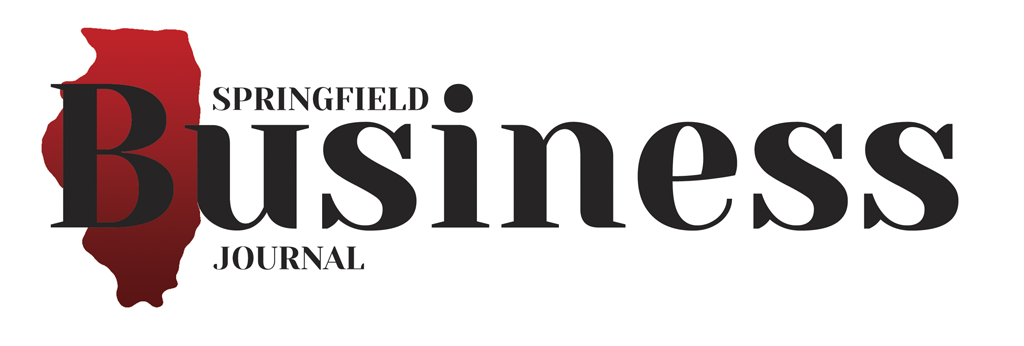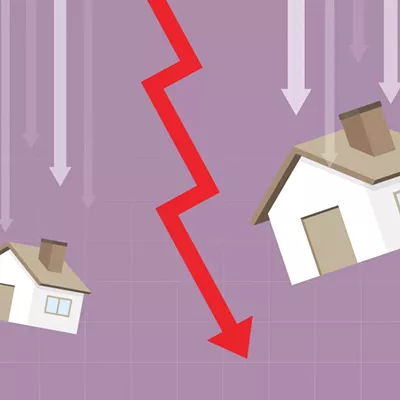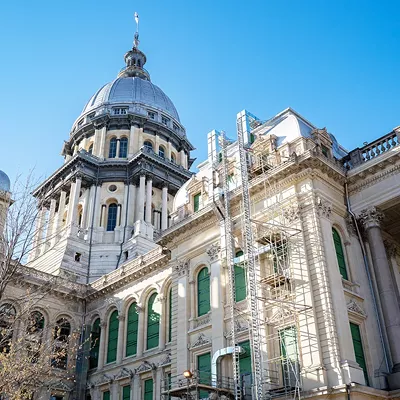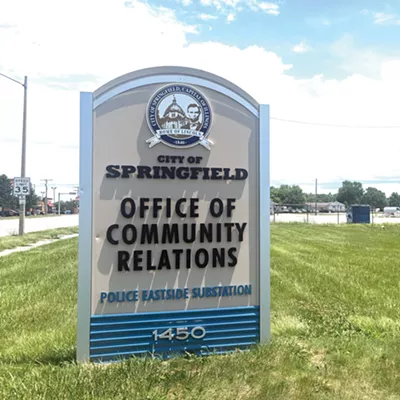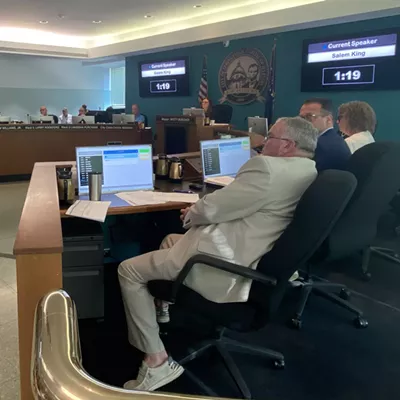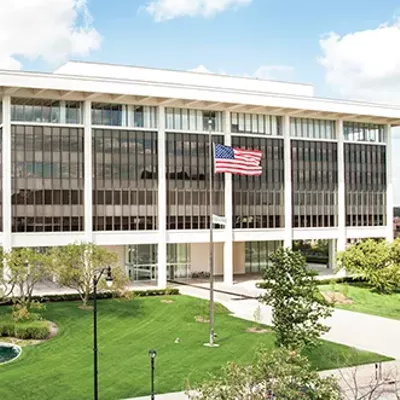by Job Conger
Abraham Lincoln Capital Airport (SPI) reports a calendar year 2014 expenditure of $7 million, mostly from user fees and state and federally underwritten sources, for improvements to airport safety and security. Executive director Mark Hanna recently reviewed those expenditures in detail.
While having scant noticeable impact on travelers using SPI, the improvement made to Taxiway Bravo – used by most aircraft preparing to depart Springfield on Runway 31 – was mandated by the Federal Aviation Administration (FAA) and allows departing pilots to more easily see aircraft inbound on final approach to that runway. The change from the dog-leg to a 90-degree turn lessens the possibility of commencing takeoffs with other traffic approaching from the southeast. The timing of the improvement coincided with the need to replace aging concrete in that part of the system. “It was due for rehabilitation,” Hanna said. “We also improved the lighting.”
A perimeter roadway was also re-positioned to more safely accommodate airport service traffic (maintenance vehicles, fuel trucks) which transit to Charlie Ramp and fixed base operator McClelland Aviation. “This work was highly visible to the public driving north and south on J. David Jones Parkway over the summer. We had many queries from people wondering what was going on.” The change in the routing will pay dividends in terms of flight safety, reducing risk of runway incursions. Cost of the work was $2.5 million. In addition to federal and state mandates, Hanna credits input from airport pilots and tenants, who meet twice a year to share suggestions for airport improvements.
A total of $800,000 (90 percent state-funded, 10 percent local-funded) of improvements to the taxiways and parking at Charlie Ramp were completed. Areas which had received no major attention since the construction of the area in the 1980s had begun to significantly deteriorate. Loose pieces of asphalt and concrete, if unseen and removed during daily inspections, are sometimes picked up by prop wash, resulting in damage to aircraft.
Improvements in building and airfield access control systems, closed circuit television and fire alarm systems totaled $1.5 million. “Most important was the updating of surveillance videos,” Hanna said. “We also introduced new access cards that require users’ pin numbers at all access gates including Charlie Ramp.” A lot of the hard wire work has been replaced by fiber optics. The whole system has been a patchwork of improvements since the mid to late 1990s. The airport now has a state of the art integrated system which is expected to serve for the next 10 to 15 years.
The result is not a “big brother” environment where movements of everyone entering and leaving the terminal are recorded along with identities based on facial scans. “From time to time the cameras are monitored on a random basis, but we have hired no additional personnel for that purpose.” Hanna said. “We review short spans of recorded tape to be sure the system is functioning.”
Equipment improvements for snow removal and ice control are part of the FAA certification process. “With their support we were able to update our fleet last year, purchasing seven new vehicles for $800,000. It is all American made,” Hanna explained. An Oshkosh snowplow with a 22-foot blade had a $400,000 price tag and was the major item purchased. “That truck will probably give us 20 to 25 years of service, in part because we don’t use salt on the runways. It won’t corrode and wear out as fast. We also picked up a back-up plow with a smaller blade, ice dry chemical spreader, a 4 x 4 plow truck for more aggressive removal on taxiways and smaller areas, a detachable plow blade and two smaller vehicles.” Locally funded replacement of the HVAC system at the Flight Standards District Office (FSDO) and resurfacing and expansion of the parking lot at the University of Illinois Extension building were also completed in 2014.
The $7 million cost expended in 2014 is expected to be duplicated in 2015. Funding is now in place for improvements to the drainage of airport land. Hangar three renovation will be completed. A second jet bridge will be added at the terminal, allowing passengers sheltered boarding and deplaning from two airliners simultaneously in inclement weather reducing passenger congestion and delays. The terminal building will be widened at the front which faces the parking lot to lessen congestion at the airline ticket counters. Improvements to access roads within the airport perimeter are also planned. “We hope to receive funding for aircraft rescue and firefighting equipment,” Hanna said.
Job Conger can be reached at 544-6122 or writer@eosinc.com
